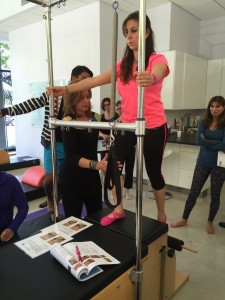 Midwest Book Review
Midwest Book Review
(Oregon, WI USA)
This review is from: Pilates for Hip and Knee Syndromes and Arthroplasties with Web Resource (Paperback)
Pilates for Hip and Knee Syndromes and Arthroplasties provides basic guidelines and techniques for using Pilates to restore function and range of motion with pre- and postoperative knee and hip syndromes, and is written for therapists, Pilates instructors, and personal trainers alike. It teaches how Pilates can become a basic fitness program for rehabilitation and recovery, offers tested references placing exercises in specific rehabilitation time lines from weeks to months, and adds case scenarios and sample Pilates mat programs. The specifics and their applications make this an outstanding survey for any Pilates user who wants to apply specific techniques to specific knee and hip recovery patterns, making for a top medical library reference.
Doody’s review
(Samuel J. Chmell, MD (University of Illinois at Chicago College of Medicine)
DOODY’S NOTES
Description
Just because an individual has a hip and/or knee replacement, do they need to stop, or refrain from initiating, a devoted core-strengthening program? Indeed they do not! And this book goes all out, nicely demonstrating why not and how to go about starting such a program.
Purpose
The purpose is to provide instruction for a preoperative and postoperative dedicated exercise regimen, providing a whole-body approach to rehabilitation, through Pilates methodology. This is a most worthwhile objective, which this book certainly meets.
Audience
It is written for Pilates instructors, manual therapists, personal trainers, and physicians.
Features
The book, first of all, describes the Pilates method and principles before detailing hip and knee anatomy and the common afflictions thereof. It then begins with basic exercises and progresses to the more complex workout for maintenance of the whole body, with a special focus on the hip and knee joints as they are rehabilitated following joint replacement. There are excellent black-and-white photographs depicting each exercise, color anatomy diagrams, and information on website access for additional information.
Assessment
This is a first-rate book. Many of our joint replacement patients are now looking for better quality and higher intensity postoperative rehabilitation.
This book is the ticket.
